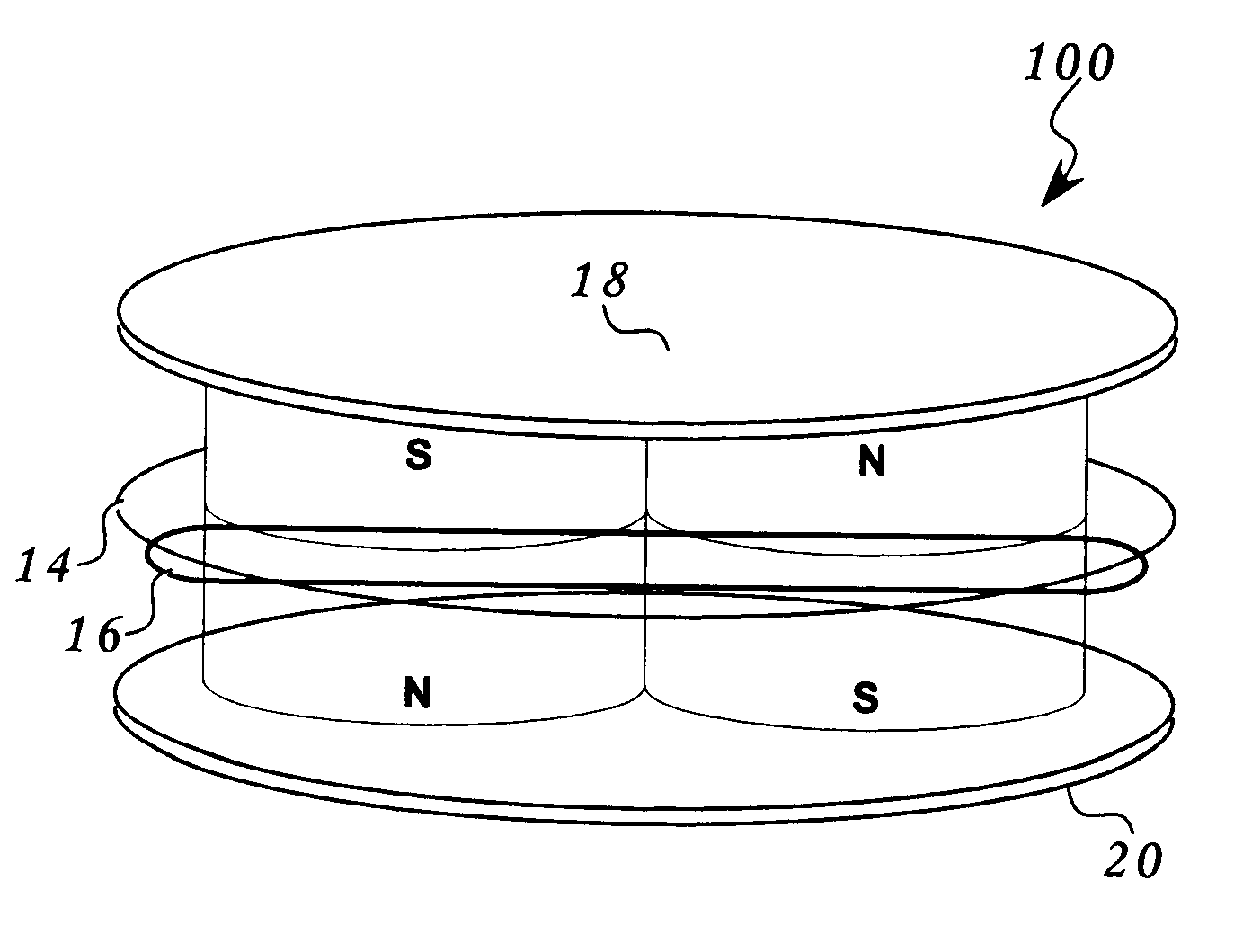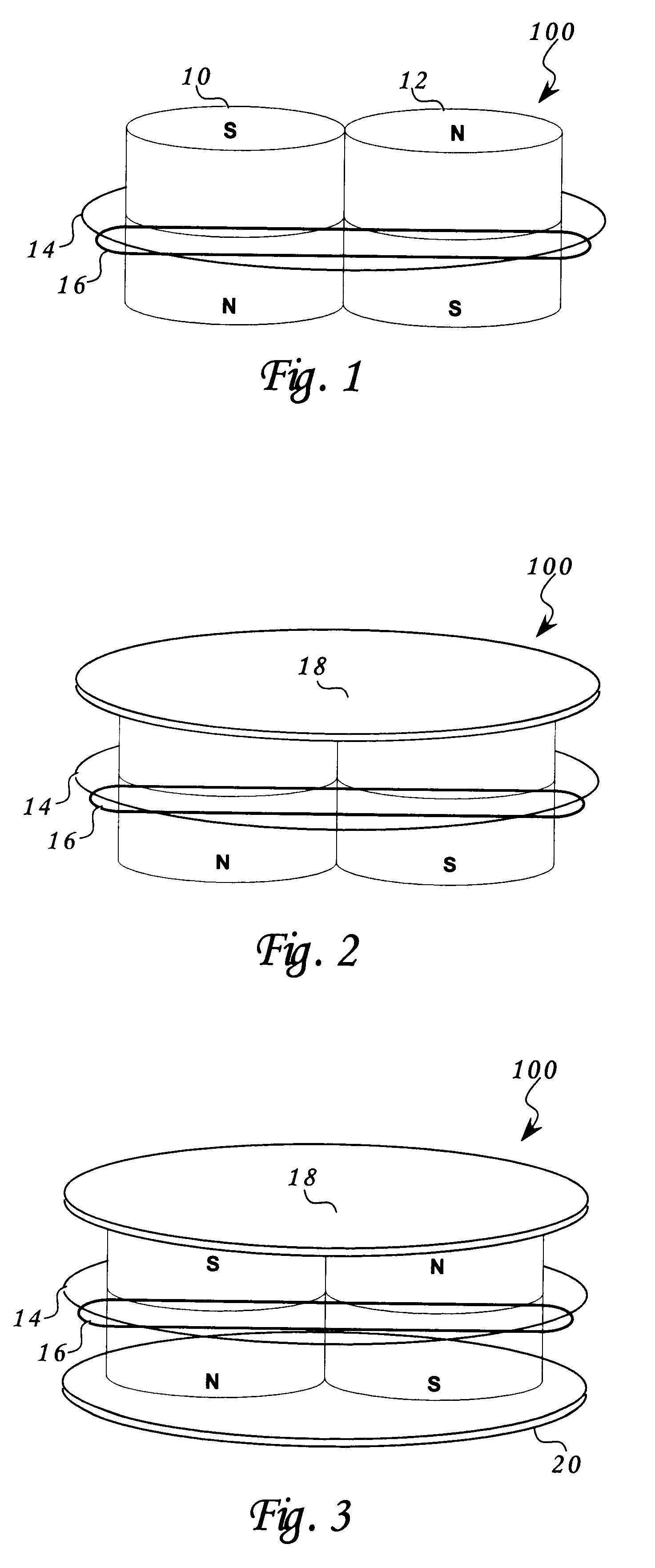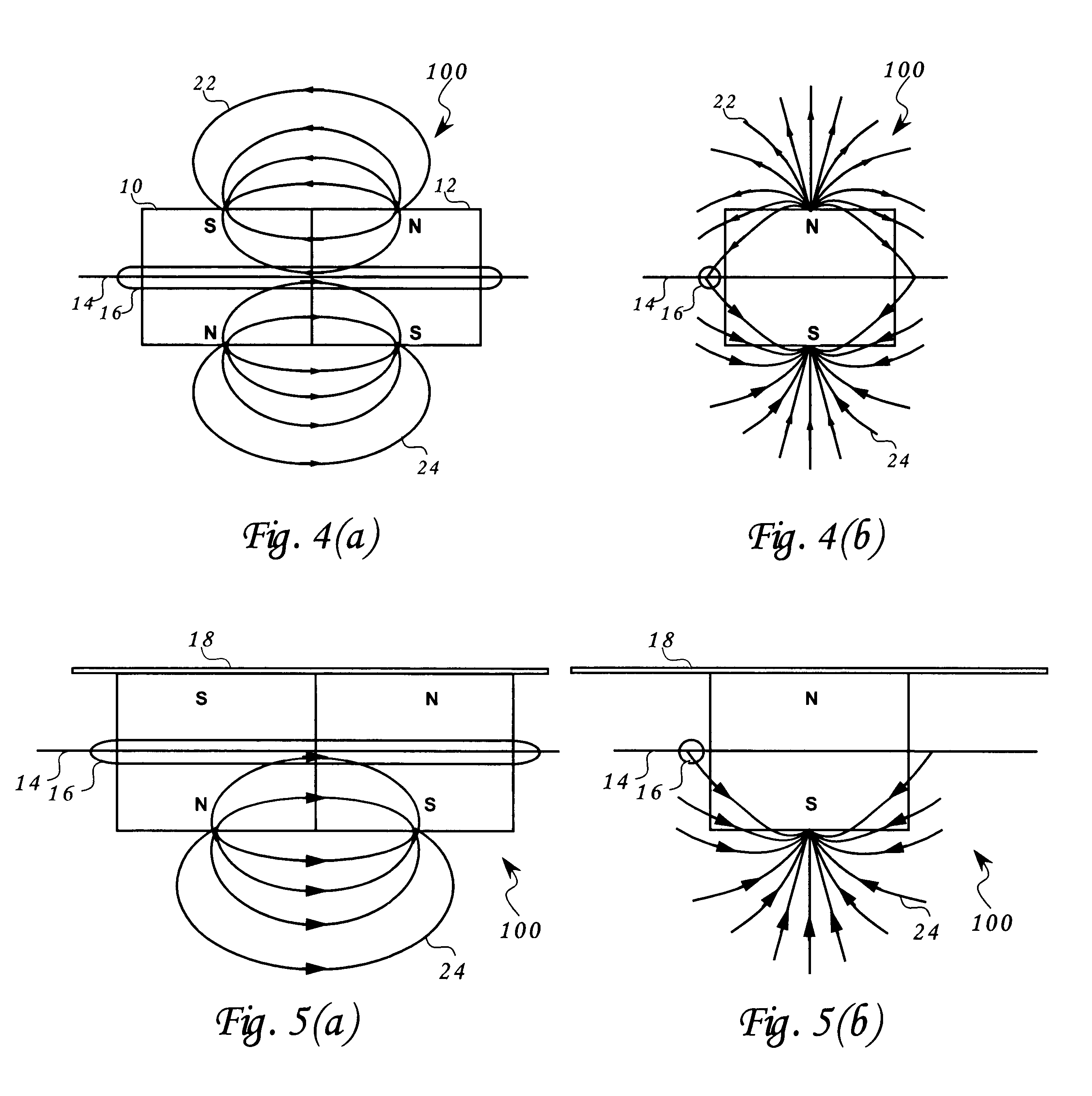Multifaceted balanced magnetic proximity sensor
a magnetic proximity sensor and multi-faceted technology, applied in the direction of magnetic/electric field switches, electrical appliances, electric switches, etc., can solve the problems of large size of devices, inability to adjust, and require alignment,
- Summary
- Abstract
- Description
- Claims
- Application Information
AI Technical Summary
Problems solved by technology
Method used
Image
Examples
embodiment 100
The magnetic pole array of the instant invention embodiment 100 is shown in FIG. 1. The magnetic pole array consists of two magnets (10) and (12) each with a North Pole and a South Pole. This magnetic pole array is equivalent to a four pole axially magnetized magnet shown in FIG. 21. The magnets are positioned next to each other so that the South Pole of one faces the same direction as the North Pole of the other. In this position, the two magnets attract and, in fact, can adhere to each other without external support. The attraction forces are due to the magnetic flux (22) and (24) of FIG. 4(a) that flows between the poles through two air gaps (upper and lower). A plane that is defined by the center cross section of the two magnets, the "equatorial" plane (14), exhibits a zone where the horizontal magnetic field is canceled (the field vector sum approaches zero). The canceling of the magnetic field shown in FIG. 4(a), is due to the equal and opposing field vectors, a canceling flux...
embodiment 102
FIG. 7(a) and FIG. 7(b) illustrate embodiment 102 of the proximity sensor configuration where the reed switch is placed above the equatorial plane where the field is not completely balanced. The introduction of a shunt, FIG. 8(a) and FIG. 8(b), at a location above the top magnetic pole array poles will reduce the magnetic field emanating from these poles. This field will diminish as the shunt is brought closer to the poles. At some point, before reaching the poles, the field emanating from the top two poles will balance the field emanating from the bottom two poles at the location of the sensor (16) thus the reed switch will be deactivated.
FIG. 9(a) and FIG. 9(b) illustrate embodiment 104 of the proximity sensor configuration that deactivates the reed switch when the shunt approaches the poles from a distance as in embodiment 102 in FIGS. 7(a), 7(b), 8(a), and 8(b). This approach balances the magnetic pole array by a second shunt applied at a distance to the bottom poles while the r...
embodiment 116
is an example of a combinational logic function and is shown in FIGS. 22 and 23. FIG. 22 illustrates a four-magnet (66), (68), (70), and (72) magnetic pole array configuration that is designed to perform a logical AND function. The sensor (16) is placed on the equatorial plane (14) substantially symmetrical to and between the two dual magnet sets (66), (68) and (70), (72) respectively. The magnetic field is balanced and the flux density approaches zero at the location of the sensor (16) that is therefore not activated.
FIG. 23 illustrates embodiment 116 with the addition two shunts (18a and 18b). While the two shunts (18a and 18b) are located on top of the two dual magnet sets (66), (68) and (70), (72) respectively, the magnetic pole array is unbalanced and the sensor is active. The removal of either shunt (18a or 18b) will reduce the unbalance by approximately a factor of two but the residual imbalance will keep the sensor active. Only the removal of both shunts (18a and 18b) will b...
PUM
 Login to View More
Login to View More Abstract
Description
Claims
Application Information
 Login to View More
Login to View More - R&D Engineer
- R&D Manager
- IP Professional
- Industry Leading Data Capabilities
- Powerful AI technology
- Patent DNA Extraction
Browse by: Latest US Patents, China's latest patents, Technical Efficacy Thesaurus, Application Domain, Technology Topic, Popular Technical Reports.
© 2024 PatSnap. All rights reserved.Legal|Privacy policy|Modern Slavery Act Transparency Statement|Sitemap|About US| Contact US: help@patsnap.com










